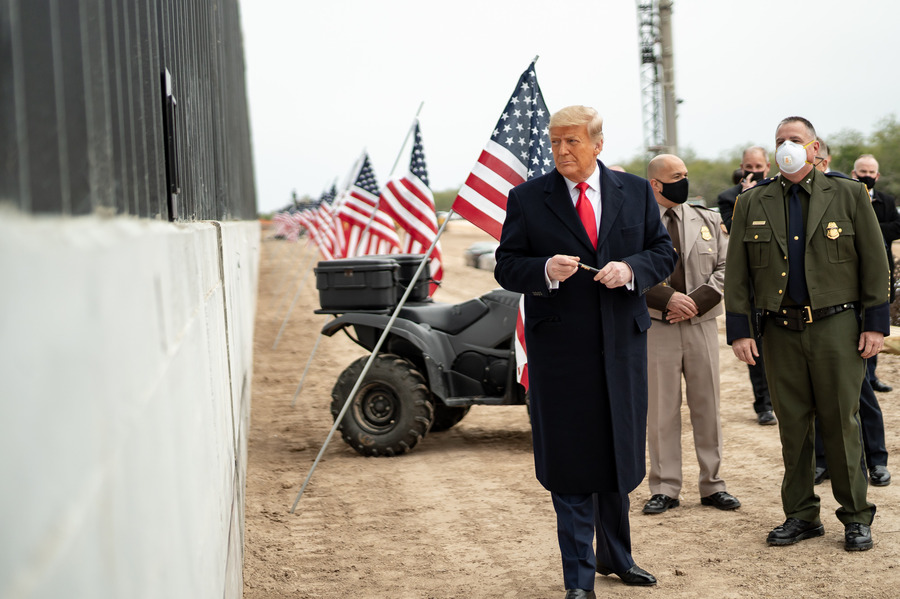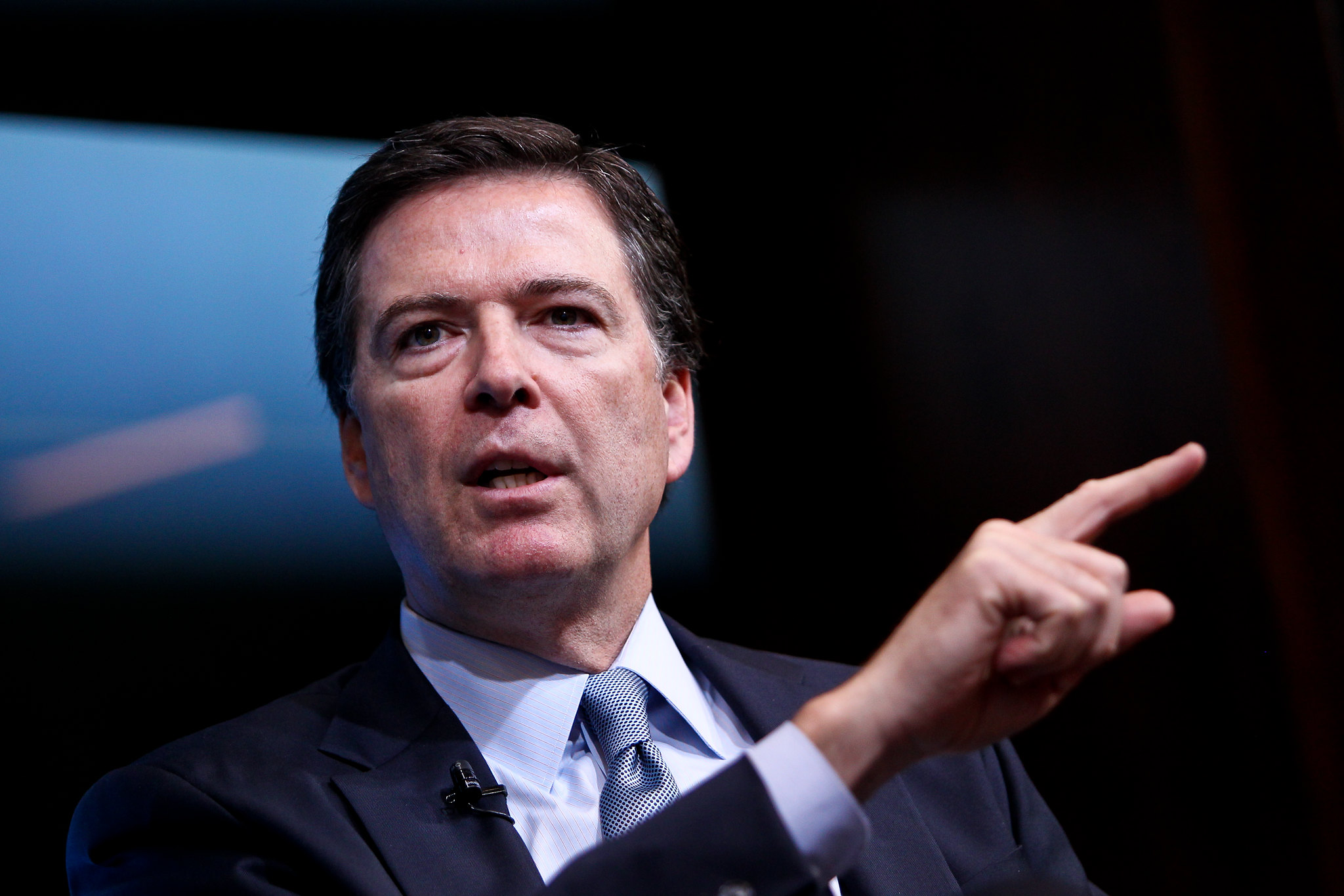An Emerging Road Map for Trump’s Use of the Military to Combat Immigration
Trump’s executive orders reveal the range of legal theories (some uncontroversial, others quite radical) that may be used to justify military deployments to combat immigration.

Published by The Lawfare Institute
in Cooperation With

As expected, President Donald Trump signed a flurry of executive orders clamping down on immigration on his first day in office. Of these executive orders, at least five relate to how his administration will use the military to stop border crossings and (potentially) enforce immigration laws within the United States.
None of these executive orders directs an immediate military deployment. But they do make such deployments almost a certainty. And they reveal the range of legal theories we should expect to play out over the months to come. Some of these legal theories are recycled from Trump’s first term. Others are far more extreme (and dubious) interpretations of statutory authorities and the president’s constitutional powers.
Supporting the Department of Homeland Security Through Increased Defense Department Personnel and Barrier Construction at the Southern Border
In “Securing Our Borders,” Trump lays out his concrete policy objectives for the southern border. They include building “a physical wall and other barriers,” “deterring and preventing the entry of illegal aliens,” and “obtaining complete operational control” of U.S. borders. To achieve these ends, Trump declared a national emergency at the southern border. This national emergency is nearly identical to what Trump pursued in his first term. It makes available to the secretary of defense 10 U.S.C. § 12302, which expedites the Defense Department process for activating reservists, including National Guard personnel, for deployments to the southern border. The national emergency also makes available to the secretary of defense an emergency military construction authority—10 U.S.C. § 2808.
Here’s what we can expect of the Defense Department’s implementation of this national emergency: first, that the Department of Homeland Security will request additional military support at the southern border. This is, in itself, entirely consistent with what has occurred at the southern border for much of the past two decades. After all, even during the Biden administration, there were already upward of 2,000 military personnel at the southern border, mobilized under 10 U.S.C. § 12302. Again consistent with past practice, there are two sources of statutory authority we should expect the Defense Department to rely on in responding to this request for assistance—Chapter 15 of Title 10 and Section 1059 of the National Defense Authorization Act for Fiscal Year 2016. Together, these statutes authorize the secretary of defense to use military personnel to perform any task that the administration can contend materially aids in advancing southern border security. Insofar as this part of Trump’s border plan is concerned, this executive order was, in many ways, legally unnecessary.
Importantly, as the Office of Legal Counsel reinforced during Trump’s first term, neither of these sources of statutory authority is an exception to the Posse Comitatus Act, which prohibits using active-duty military personnel for domestic law enforcement functions. It does not, however, limit how the defense secretary may use the National Guard when they are mobilized in a hybrid duty status under 32 U.S.C. § 502(f) (often called “Title 32” duty status).
So, although there certainly will be additional military personnel support at the southern border, we can’t yet know whether those military personnel will be performing traditional law enforcement functions. This will depend on (a) the scope of support activities that the Department of Homeland Security requests; (b) which requested activities the Defense Department agrees to support; and (c) whether the Defense Department uses military personnel in an active-duty status or National Guard in a § 502(f) duty status to perform these activities.
Unfortunately, there is no statutory requirement that the Trump administration’s adjudication of any of these questions be done in the light of day. Section 1059 requires the Defense Department to report to Congress when it is used for military deployments, but that’s the extent of the disclosure requirement. It will be essential that journalists continue to probe the administration for information about the status of this Defense Department support.
Second, it is likely that the Department of Homeland Security will once again request Defense Department support to build a border wall. As in the first administration, the Defense Department will likely rely on two authorities to fulfill such a request. The current emergency declaration makes the first, 10 U.S.C. § 2808, expressly available to the secretary of defense. Section 2808 authorizes the secretary “without regard to any other provision of law, [to] undertake military construction projects ... not otherwise authorized by law that are necessary to support such use of the armed forces.” And also similar to the first administration, to make funds available for border barrier construction under § 2808, the Defense Department would need to repurpose funds appropriated to it for other military construction projects (essentially, any construction done on a military installation). The second authority is 10 U.S.C. § 284, which authorizes the Defense Department to assist federal or state law enforcement agencies by constructing “roads and fences and installation of lighting to block drug smuggling corridors across international boundaries of the United States.” By referencing a standing provision governing how agencies may move funds between appropriations, 10 U.S.C. § 2214, we can also reasonably expect that the Defense Department will draw on funds appropriated for other purposes to fulfill such a request. As I have previously detailed in Lawfare, this will likely restart aborted litigation about the scope of the Defense Department’s discretion to repurpose funds.
Independent Military Actions to Curb Immigration
Trump’s executive orders also indicate a range of tasks he may direct the Defense Department to take without any request from the Department of Homeland Security for support. The process by which Trump will direct these actions is outlined in “Clarifying the Military’s Role in Protecting the Territorial Integrity of the United States.”
To understand the order, it’s important to know that Congress requires that the Defense Department organize its operational forces around a number of combatant commands. Some of these commands are functional (such as the Transportation Command, which organizes the moving of materiel and military persons for military operations). Others are geographic (such as the U.S. Northern Command, also known as USNORTHCOM). The secretary of defense, subject to presidential direction, outlines the broad mission responsibilities of these commands in a classified document called the Unified Command Plan. The chairman of the Joint Chiefs of Staff reviews and recommends revisions to the Unified Command Plan no less than every two years, and Congress must be informed of any significant changes to the plan. The combatant commands receive more detailed guidance about how they should plan to use their assigned forces through contingency planning guidance.
In his executive order, the president has directed a significant reconceptualization of USNORTHCOM around border security. USNORTHCOM was established in response to the 9/11 attacks and, per its website, is primarily concerned with “homeland defense and civil support missions.” Trump has directed that the Unified Command Plan assign to USNORTHCOM a new mission: “to seal the borders and maintain the sovereignty, territorial integrity, and security of the United States by repelling forms of invasion including unlawful mass migration, narcotics trafficking, human smuggling and trafficking, and other criminal activities.” The order also adds this mission to existing contingency planning guidance and other, more detailed, planning requirements. Finally, the commander of USNORTHCOM must provide an estimate for what he will need to act on this guidance (called a “commander’s estimate”) within 30 days.
What would be the legal basis for USNORTHCOM to execute this mission? This and other executive orders provide a few clues.
First, and most straightforward, are statutory authorities that, without any emergency declaration, authorize Defense Department support to civil authorities. These authorities include those in Chapter 15 and Section 1059, outlined above. They also include other counterdrug authorities like 10 U.S.C. § 124, which establishes the Defense Department as the “single lead agency of the Federal Government for the detection and monitoring of aerial and maritime transit of illegal drugs into the United States.” The Defense Department frequently uses these authorities, and I would expect them to readily withstand judicial scrutiny.
Second are provisions of the Insurrection Act. Trump’s emergency declaration directs the secretaries of defense and homeland security to issue a report in 90 days about other actions necessary for “complete operational control” of the border. This report will include whether the president should invoke 10 U.S.C. § 252 (what the declaration refers to as the “Insurrection Act of 1807”). That statute authorizes the president to use the military to enforce federal law when “unlawful obstructions, combinations, or assemblages, or rebellion against the authority of the United States, make it impracticable to enforce the laws of the United States in any state by the ordinary course of judicial proceedings.” Laura Dickinson has written extensively about how the Office of Legal Counsel has narrowly construed this seemingly expansive text. And Elizabeth Goitein has noted that the Insurrection Act has never been used for immigration enforcement or border security.
The Supreme Court, however, has traditionally been quite deferential to presidential determinations to invoke provisions of the Insurrection Act. Trump’s executive orders lay the factual foundation of what we should expect to see of any potential justification for invoking Section 252. The emergency declaration, for example, asserts that “America’s sovereignty is under attack.” It goes on to say that what it terms as an “invasion” by drug cartels at the border “has caused widespread chaos and suffering” and has “led to the horrific and inexcusable murders of many innocent American citizens.” Foreign criminal gangs, he says, “have begun seizing control of parts of cities, attacking our most vulnerable citizens, and terrorizing Americans beyond the control of local law enforcement.” The extent to which courts will entertain lawsuits objecting to the factual veracity of these arguments remains to be seen.
Third are provisions of the Alien Enemies Act, codified in part at 50 U.S.C. § 21, which provides that:
Whenever there is a declared war between the United States and any foreign nation or government, or any invasion or predatory incursion is perpetrated, attempted, or threatened against the territory of the United States by any foreign nation or government, and the President makes public proclamation of the event, all natives, citizens, denizens, or subjects of the hostile nation or government, being of the age of fourteen years and upward, who shall be within the United States and not actually naturalized, shall be liable to be apprehended, restrained, secured, and removed as alien enemies.
Katherine Yon Ebright has written extensively about this statute, which was last used to inter Japanese Americans during World War II. As she has noted, an obvious obstacle to Trump using this authority regarding immigration is that a drug cartel is not a “foreign nation or government.” Yet it’s clear that we may well, nevertheless, see the president attempt to use it. In his order “Designating Cartels and Other Organizations as Foreign Terrorist Organizations and Specially Designated Global Terrorists,” Trump directed the attorney general, Department of Homeland Security, and State Department to “make operational preparations regarding the implementation of any decision I make to invoke the Alien Enemies Act.” And in his order regarding USNORTHCOM, Trump asserted that the armed forces “have played a long and well-established role in securing our borders against threats of invasion, against unlawful forays by foreign nationals into the United States, and against other transnational criminal activities.” None of these arguments gets around the core legal defect of this legal theory. But that does not make attempts to use the Alien Enemies Act any less likely.
The final, and least clear, source of potential authority is constitutional. In “Guaranteeing the States Protection Against Invasion,” Trump focuses attention on Section 4 of Article IV, which provides:
The United States shall guarantee to every State in this Union a Republican Form of Government, and shall protect each of them against Invasion; and on Application of the Legislature, or of the Executive (when the Legislature cannot be convened) against domestic Violence.
In this order, Trump asserts that “the Federal Government has failed in fulfilling this obligation to the States and [I] hereby declare that an invasion is ongoing at the southern border, which requires the Federal Government to take measures to fulfill its obligation to the States.” He then directs a number of immigration restrictions based both on statutory authority (codified in the Immigration and Naturalization Act) as well as his “express and inherent powers in Article II of the Constitution.” And as noted above, language characterizing the activities of drug cartels as an “invasion” pervades all of these executive orders.
Because this argument is so nebulous, it is difficult to parse its exact contours or project how the president might use it to justify a military deployment. As I have previously written, the executive branch has long asserted two inherent authorities to use the military within the United States. Both, however, are circumscribed in ways that make them unsuited to the expansive task Trump sets out. The first is the protective power, and it asserts the president’s ability to use the military to protect federal functions, persons, and property. The second is the emergency authority, and it asserts a military commander’s authority to use his or her troops to conduct law enforcement functions when communication with higher authority has utterly broken down and local law enforcement has lost control of law and order. The executive branch has asserted that both are rooted in the president’s authority under the Take Care Clause. Neither of these doctrines, however, would justify a large-scale military deployment aimed generally at expelling migrants.
There are more extreme, at this point quite speculative, options.
Until approximately World War II, the War Department held the Guaranty Clause portion of Article IV, Section 4, to be an exception to the Posse Comitatus Act and basis for deploying the military within the United States. But the Department of Defense has long since abandoned this theory, and a variety of statutes implementing this authority arguably fully occupy this field (e.g., 10 U.S.C. § 252).
Other Presidential Direction
Finally, the national emergency declaration requires that the Defense Department revise its use of force policies. We have little substantive indication of what this might entail. The declaration requires only that these policies “prioritize the safety and security … of members of the Armed Forces.” I would expect the Defense Department to implement this direction through revisions to two internal Defense Department documents: first, DoD Directive 5210.56, a publicly available document that governs arming and the use of force; and second, Chairman of the Joint Chiefs of Staff Instruction 3121.01B, a classified document that outlines the baseline rules for the use of force employed by the military when operating in the United States.
We again will have little insight into what practical changes emerge from this process outside any policy-wide revisions made to DoD Directive 5210.56. In light of the range of novel legal theories under which military personnel may operate, changes in the rules governing the use of force are particularly concerning.
* * *
The next six months will be critical in ascertaining the degree to which the Trump administration is willing to court unprecedented and tenuous legal theories for using the military to combat immigration both at the border and elsewhere in the United States. Monday’s executive orders provide an indication of some of the avenues that the administration is contemplating.





